Sales & Service>Trouble-shooting bearing problems
Sales & Service
- Main Clients and markets
- Customer Service
- Bearing Selection services
- Bearing Handling Service
- Bearing Fitting Service
- Lubrication Service
- Preload
-
Bearing cleanliness
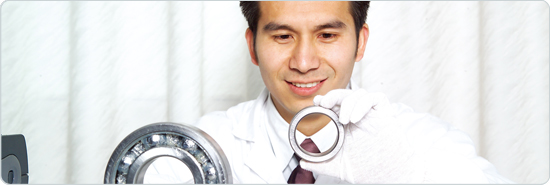
Trouble-shooting bearing problems
The bearing normally can be used up to the end of the rolling fatigue life if handled properly. If it fails earlier, it may caused by improper mounting, mishandling, poor lubrication, entry of foreign matter or abnormal heat generation. Considering possible causes of bearing failure and damages according to the condition of the machine on which the bearings failed and taking countermeasures is very important to prevent the recurrence of similar problems.
Following types of damage typically encountered are presented in the table below.
|
Damage type |
Illustration of damage conditions |
Possible Causes | Solutions |
| Flaking |
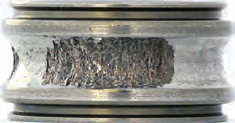
|
● Over and excessive load ● Improper handling and mounting ● Poor shaft or housing accuracy etc. ● Unsuitable bearing clearance ● Installation error etc. |
● Find out the cause of the heavy load ● Examine operating conditions ● Improve the mounting method ● Check the precision of shaft and housing ● Check the bearing internal clearance |
| Speckles |
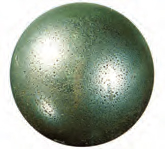
|
● Ingress of foreign particles |
● Improvement in sealing ● Improvement of the operating environment if possible ● Filtration of the oil or grease |
| Cracking |

|
● Excessive load ● Excessive impacts ● Rapid cooling ● Excessive interference ● Overheating by creeping ● Very loose fit ● Large flaking etc. |
● Find out the cause of very large load ● Improve the installation process ● Correct the interference ● Prevent the creep |
|
Rust and Corrosion |
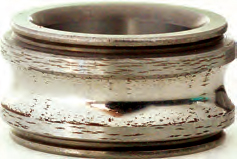
|
● Ingress of water or corrosive material (such as acid) ● Condensation of moisture contained in the air ● Poor packaging and storing conditions ● Handling with bare hands etc. |
● Do not use bad quality varnish ● Dry the varnish properly with sufficient time ● Improvement in sealing effect ● Careful handling of bearing |
|
Mounting Flaws |
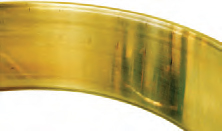
|
● Inclination of inner and outer rings during mounting or dismounting. ● Shock load during mounting or dismounting. |
● Use appropriate jig and tool ● Avoid a shock load by use of a press machine ● Center the relative mating parts during mounting |
|
Eletrical Corrosion |
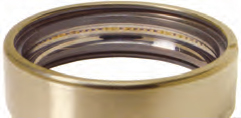
|
● Electrical potential difference between inner and outer rings ● Electrical potential difference of a high frequency that is generated by instruments or substrates when used near a bearing |
● Design electric circuits which prevent current flow through the bearings ● Insulation of the bearing |
| Seizure |
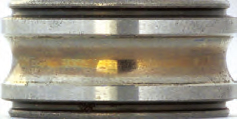
|
● The grease’s maximum working temperature is lower than the actual temperature and the grease get failure. ● Excessive rotational speed ● Dissipation of heat generated by bearing is not enough. ● Clearance too small. ● Excessive load (or preload) ● Installation error etc. |
● Selection of suitable lubricant grease ● Improve dissipation of heat from the bearing ● Improvement in clearance and preload ● Improvement in operating conditions |
| Fracture |

|
● Impact during mounting ● Excessive load ● Poor handling such as dropping |
● Improve the mounting method (shrink fit, use proper tools) ● Reconsider the load conditions ● Provide enough back- up and support for the bearing rib. |
| Fretting |
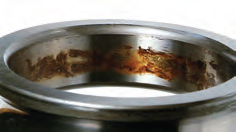
|
● Poor lubrication ● Vibration with a small amplitude ● Insufficient interference |
● Use a proper lubricant ● Apply a preload ● Check the interference fit ● Apply a film of lubricant to the fitting surface |
| Cage Damage |
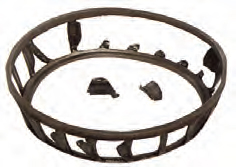
|
● Poor mounting (Bearing misalignment) ● Large moment load ● Shock and large vibration ● Excessive rotation speed, sudden acceleration and deceleration ● Poor lubrication ● Temperature rise |
● Check the mounting method ● Check the temperature, rotation, and load conditions ● Reduce the vibration ● Select a cage type ● Select a lubrication method and lubricant |




